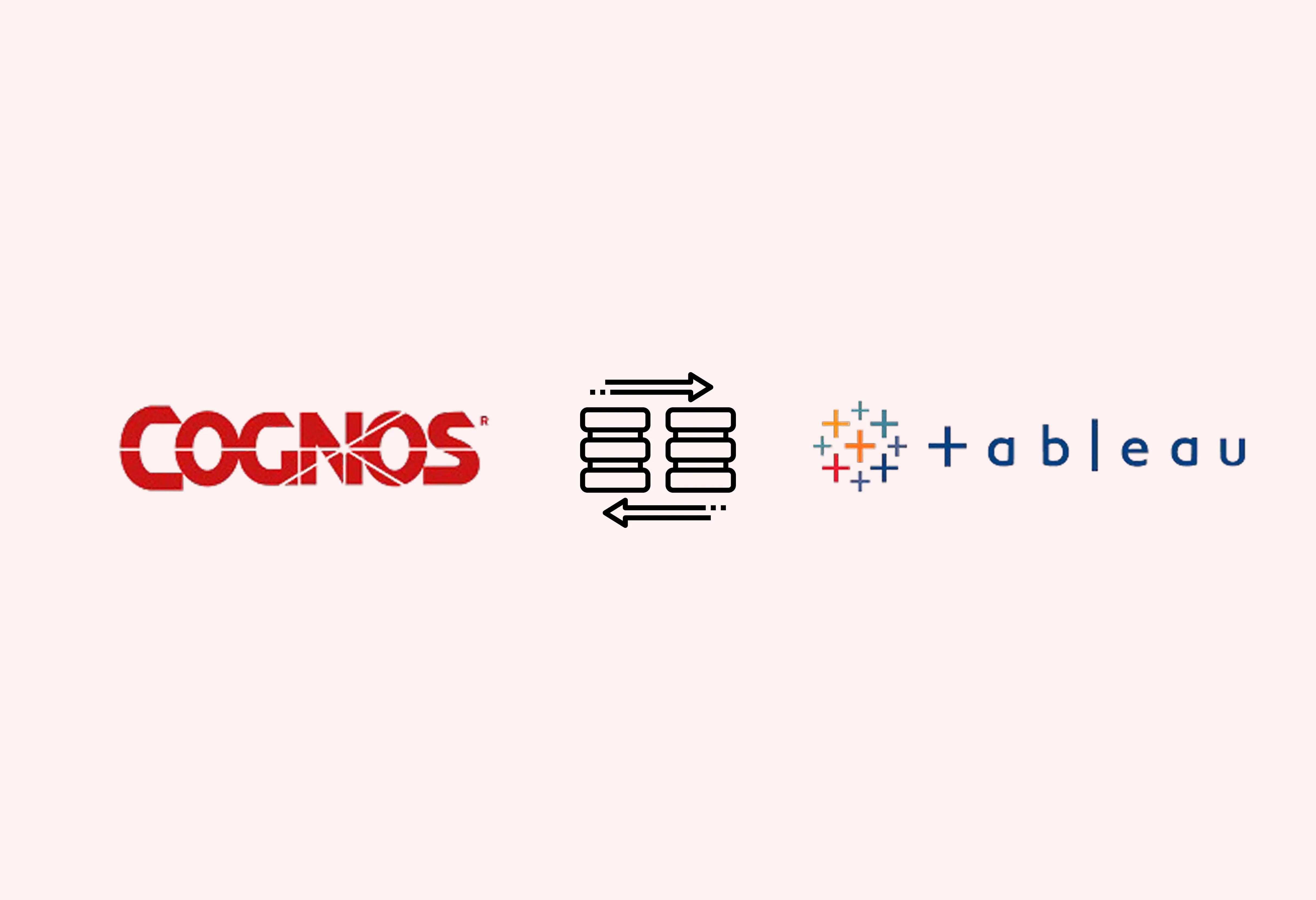


Moving your complete database is no easy task. This is especially true based on the size of your company and its database. However, it can make a huge difference when it comes to how flexible and easy-to-use your database and reporting becomes.
Generally, there are many ways it can go off-track! This is why we’ve created a simple guide to make your migration from Cognos to Tableau a whole lot easier.
Tableau provides a user-friendly interface, real-time data connectivity, and advanced analytics features that help you get deeper insight.
One common question companies face is whether to stick with Cognos or switch to Tableau. While Cognos has its strengths, Tableau does better when it comes to data visualization and user experience.
Does this mean Tableau is just another BI tool? Not quite! Tableau has interactive dashboards and a drag-and-drop interface that adds usability for non-technical users. Its ability to connect to various data sources in real-time provides more flexibility in analysis.
Overall, companies seeking to foster data-driven cultures find that Tableau’s capabilities for intuitive insights and collaboration far surpass what Cognos traditionally has.

Analyzing your Cognos dashboard is crucial for a successful migration to Tableau. Proper planning ensures essential dashboards are prioritized and redundant ones are minimized. In this, you need to look closely at what needs to be prioritized based on BAU activities and what’s most needed.
Extracting data from Cognos is a technical prerequisite for migration to Tableau. Proper extraction ensures data consistency and integrity during the transition.
Transforming data for Tableau compatibility is a crucial step to ensure seamless integration post-migration from Cognos. Proper data preparation optimizes performance and usability in Tableau.
Moving data into Tableau is a critical phase in the migration from Cognos, ensuring that users can access and analyze information effectively.
Recreating reports and visualizations in Tableau is vital for using the platform's capabilities post-migration from Cognos. This step ensures continuity and improves data insights. In doing so, you’ll also find that Tableau has better visualization capabilities when compared to Cognos.
Testing and validating data for Tableau is essential to ensure accuracy and reliability after migrating from Cognos. This step helps maintain data integrity throughout the analysis process.
Aside from this, it helps make sure that the logic from Cognos functions easily and without a hitch in tableau - an issue here could be the result of missing values or incorrect mapping.
Training and documenting processes during the migration from Cognos to Tableau is critical for ensuring a smooth transition and user adoption. Comprehensive training minimizes disruptions and promotes efficiency.
Uploading and deploying to a Tableau Server is essential for making your visualizations accessible to end-users post-migration from Cognos. Proper deployment encourages collaboration and data sharing.
Many companies face challenges with outdated data visualization tools like Cognos, leading to frustration among users.
Tableau addresses this issue with better data visualization capabilities, allowing users to create dynamic and interactive dashboards designed to their specific business needs.
Unlike Cognos, Tableau uses a more intuitive drag-and-drop interface, helping with faster insights.
Additionally, it also has real-time data connections and advanced analytics through its in-memory processing. This helps users access up-to-date information a lot easier. Overall, transitioning to Tableau improves data-driven decision-making by providing clearer visual narratives and facilitating collaboration across teams.
Many companies struggle with lengthy reporting processes in Cognos, leading to delays in decision-making. However, Tableau improves report creation, empowering users to generate insights rapidly without extensive technical expertise.
Well, It’s more than just a reporting enhancement. Tableau’s drag-and-drop functionality allows users to visualize data in real-time, while its powerful data blending capabilities make integration from multiple sources easier.
Additionally, automated data refreshes make sure that reports reflect the most current information, drastically reducing turnaround times and adding to the overall productivity in data-driven environments.
A common frustration with traditional BI tools like Cognos is their complexity, making data analysis cumbersome for many users. However, Tableau transforms this experience by offering a more intuitive platform for data visualization.
Is it just a user-friendly interface? Not exactly! Tableau’s drag-and-drop functionality allows users to create compelling visualizations without extensive training. Its seamless integration with various data sources and real-time updates facilitate instant insights.
Overall, this ease of use helps teams to use data more effectively, enabling quicker decision-making and fostering a culture of data literacy across your company.
Many users find themselves frustrated with the outdated interface of Cognos, which can come in the way of data analysis. However, Tableau presents a modern platform designed to meet today’s data visualization demands.
Tableau uses a state-of-the-art architecture that supports real-time analytics and reliable data connectivity. Its cloud capabilities allow for easy collaboration and sharing across teams, while advanced features like AI-driven insights and machine learning integrations improve decision-making.
Overall, migrating to Tableau allows companies to harness the power of modern analytics for competitive advantage.
One drawback with Cognos is its annoying reporting capabilities, which can slow down data analysis. However, migrating to Tableau introduces a more agile approach to data visualization.
Is it simply a matter of aesthetics? Not at all! Tableau's modern interface facilitates user-friendly interaction with complex data sets, allowing for the swift creation of interactive dashboards.
Need help with migrating your database? Why not hire a certified team of professionals that can get it wrapped up in a lot less time? Sound promising? Then reach out to our team of data analysts for a free 30-minute consultation call.
Lorem ipsum dolor sit amet, consectetur adipiscing elit, sed do eiusmod tempor incididunt ut labore et dolore magna aliqua. Ut enim ad minim veniam, quis nostrud exercitation ullamco laboris nisi ut aliquip ex ea commodo consequat. Duis aute irure dolor in reprehenderit in voluptate velit esse cillum dolore eu fugiat nulla pariatur.
Block quote
Ordered list
Unordered list
Bold text
Emphasis
Superscript
Subscript







